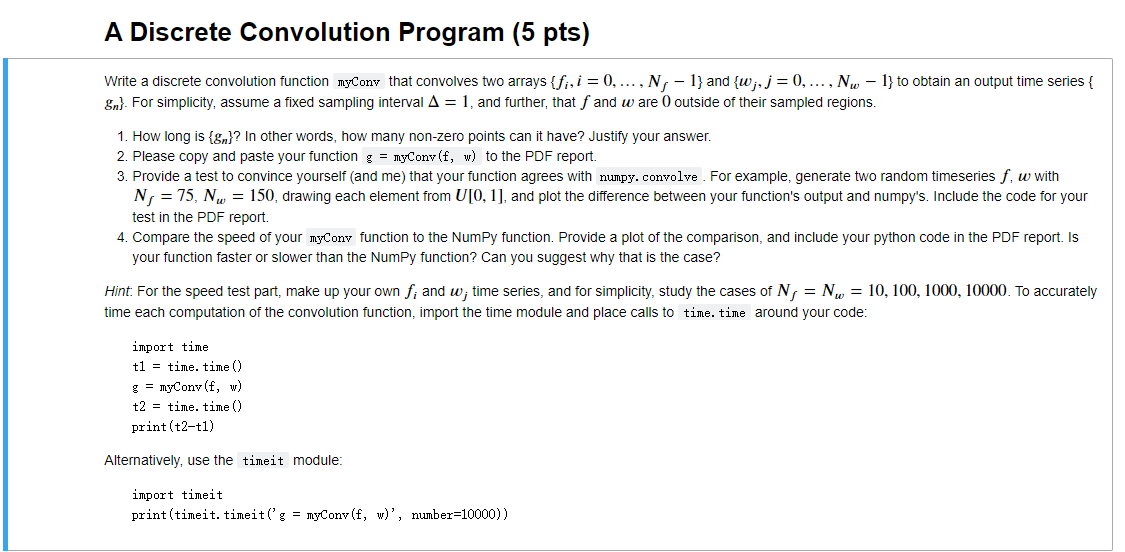Answered step by step
Verified Expert Solution
Question
1 Approved Answer
Anwsering in python code on jupyternotebook Write a discrete convolution function myConv that convolves two arrays {fi,i=0,,Nf1} and {wj,j=0,,Nw1} to obtain an output time series
 Anwsering in python code on jupyternotebook
Anwsering in python code on jupyternotebook
Step by Step Solution
There are 3 Steps involved in it
Step: 1

Get Instant Access to Expert-Tailored Solutions
See step-by-step solutions with expert insights and AI powered tools for academic success
Step: 2

Step: 3

Ace Your Homework with AI
Get the answers you need in no time with our AI-driven, step-by-step assistance
Get Started


